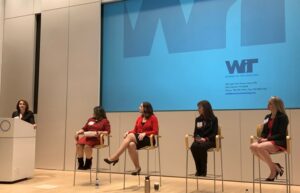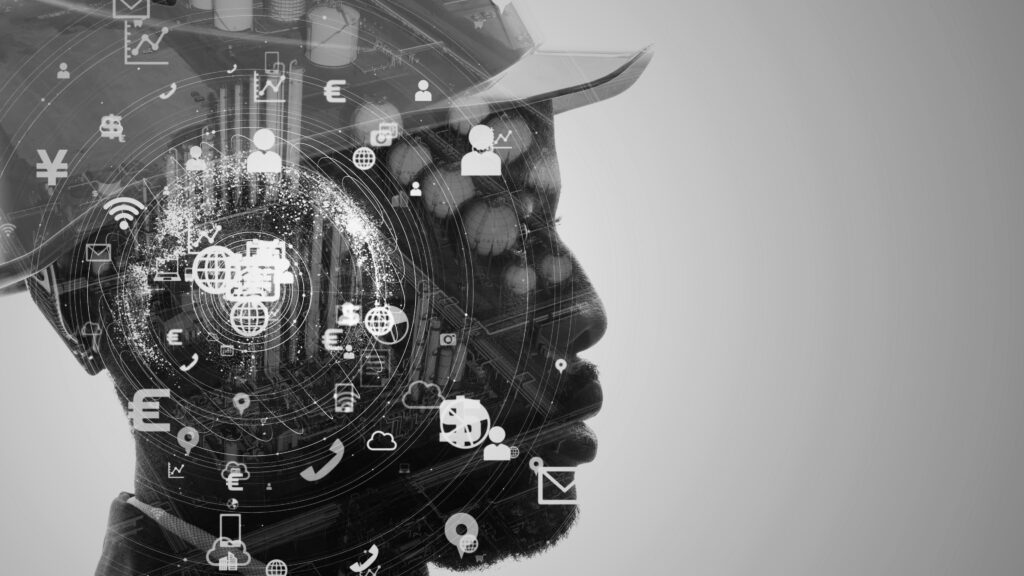machine learning
By Jonathan Sanders, Director, Research, GovExec
On 02/01/23, the US Army released its long anticipated solicitation for AI/ML development processes and technologies, and pathfinder processes to identify militarily relevant technologies.
As noted by initial pre-solicitation in August 2022, the overall objective of this effort is to develop concepts that incorporate visualization, include coalition interconnectivity, allow for the ability to obtain data from all information sources, to include Unattended Ground Sensors, improve situational awareness, and decrease the current analyst workload.In particular, this effort will support contested/dense urban environment operations to include subterranean environments.
In order to advance its AI/ML capabilities, the Army has established a number of programs and initiatives that focus on the development and integration of these technologies into its operations. One such program is the Army AI Task Force, responsible for overseeing the Army’s AI/ML development efforts and providing guidance on the integration of these technologies into the force.
The task force works closely with other military organizations, government agencies, and industry partners to ensure that the Army is at the forefront of AI/ML research and development.
Through the power of GovTribe, we are able to glean some of the likely bidders. The likely bidders tool is a powerful machine learning algorithm combining industry attendees and question & answer lists with those that have past performance similar to this type of work, of which include:
- Discovery Machine Inc.
- Wallaroo Labs Inc.
- Scale Ai, Inc.
- Mile Two LLC
- Prescient Edge Corporation
- Oncospace Inc.
- Systems & Technology Research LLC
- Objectsecurity LLC
- Cerebras Systems Inc.
- DS2 LLC
- And Others
In addition to the above, there have been many small businesses that have received small business funding from the Army Contracting Command in the last year in the same parents NAICs as the current solicitation, of which include:
- Colsa Corporation
- Torch Technologies Inc.
- Galley Power
- Mid-Michigan Research LLC
- 3Dflexible Inc.
- Cornerstone Research Group Inc.
- Precision Combustion Inc
- Autonomous Solutions Inc.
- Kestrel Rechnology LLC
- Molyworks Materials Corporation
- Among others
These ongoing solicitation efforts will ensure that the Army has the knowledge and skills necessary to effectively use and integrate Al/ML technologies into its operations for years to come.
The due date for the current solicitation is 03/08/23.
What this means for you
Overall, the Army’s continued efforts in AI/ML demonstrate its commitment to staying ahead of the curve in modern warfare, and they need your team’s help to do so.
Insights, Research, and YOUR Path to More Awards
GovExec’s Insights & Research Group (comprising Market Connections, Government Business Council, and Leading Brands) and GovTribe can keep you up to date on what is happening in this rapidly changing contract environment.
GovTribe is a collaborative platform that lends business development teams a hand through research and tracking of contracting vehicles as well as targeted intelligence on GSA Federal Supply Schedules, GWACS, IDIQs, and other multiple award vehicles.
Combining the data, insights, and expert analysis you get at Market Connections with the ease, agility, and usability of GovTribe can help you strategically position yourself right where you want to be for future opportunities.
Questions? Please reach out to Jonathan Sanders at jsanders@govexec.com.

WiTConnect: State of Technology in Healthcare IT Panel
Women in Technology recently hosted their quarterly WiTConnect event focused on the state of technology in healthcare. This event focused on the top challenges faced in the Healthcare IT industry by bringing a panel of industry experts to share their experiences. Predominantly focused on the public sector, the following panelists shared the priorities, challenges and innovations being seen from both sides of the industry as they look for solutions and work together to improve citizen and agency experience:
- Stacie Alboum, Deputy Director, Center for Information Technology (CIT), National Institutes of Health (NIH)
- Maheen Mirza, Director, Dell Technologies, Federal Healthcare
- Genevieve Morris, Founder, Integral Health Strategies (IHS)
- Patty Obermaier, Vice President, US Health & Life Sciences Organization, Microsoft
Overall Challenges
The imbalance of supply (a trained healthcare workforce) and demand (greater need for services) is a top challenge facing the industry. According to Patty Obermaier from Microsoft, the population of those aged over 60 will more than double by 2050 and there will be a shortage of 14 million healthcare workers by 2030. While the right technology can help meet some of the demand, it can’t replace people. Multiple panelists agreed that a strong workforce development effort must take place within this field while healthcare IT technologies continue to catch up.
In addition, a data explosion has also happened in this field. According to Obermaier, “There are four thousand new medical publications showing up on PubMed every day and knowledge of the medical field doubles every 73 days.” Genevieve Morris, founder of IHS and author of multiple policies, also noted a significant increase in the amount of data being exchanged within the medical community. She likened it to, “turning on a faucet… a fire hydrant really… and expecting physicians to weed through that data in real time while their patient is sitting in front of them. Realistically that’s not going to happen, things will get missed and adverse events will occur.”
Finally, in a digital age, patients are also digital consumers with their own needs. Their health care expectations are likening to their expectations for all consumer interactions. When they walk into any health institution, they expect that institution to have all their records available and be able to pay for interactions the same way they pay across other markets, for example, with apps such as Venmo. For many reasons, these expectations cannot currently be met.
Key Public Sector Challenges
Healthcare IT in the public sector brings its own unique challenges. These include:
- Highly regulated federal environment
- Complex procurement and budgets
- Working and maintaining legacy IT systems
Stacie Alboum, Deputy Director at the Center for Information Technology at NIH, shared that, beyond those challenges, her agency faces a high level of complexity and range of services including a vast array of institutes and centers each focused on their own mission. Alboum’s agency is tasked with being efficient and effective in providing tools and services that provide a high-speed network to perform research; a suite of communication collaboration capabilities able to support hundreds of thousands of meetings and interactions; and high performance computing capabilities to conduct large scale data analyses in a variety of scientific fields to all 44K staff members and thousands of external collaborators.
Meeting the demands of all centers and institutes is only one piece of the complex needs of many public sector healthcare IT professionals. Like many other agencies, those in healthcare IT are spending a majority of their capital expenditure budgets (roughly 80%) on operating and maintaining legacy IT systems. To modernize IT, agencies are finding innovative ways to work with and learn from industry. Because certain vehicles are not in place, agencies are looking at using Other Transaction Authorities (OTAs) in order to help them get products, pilots and proof of concepts to market much faster. They have been open to private/public partnership to learn from industry and to are willing to talk to industry to hear what they are doing to see how they can also take advantage of it.
Looking Forward
AI and machine learning tools are also being developed by industry to help with the collection and exchange of data, the shortage of qualified workers and the streamlining of administrative processes. One example is a prototype being released by Microsoft that includes a tool that listens to and transcribes interactions between doctors and their patients, allowing practitioners to focus more on their patients and less on note-taking.
Additional tools may help practitioners weed through and pull the data they need when they need it. To help with data exchange and interoperability, Morris noted her work on the Trust Exchange Framework and Common Agreement (TEFCA). The goal of TEFCA is to make all health information networks across the country talk to and share data with each other. This will mitigate the need for healthcare systems to join multiple networks in order to share data.
Information blocking regulations underway may also help minimize the hoarding of data. Fast Healthcare Interoperability Resources (FHIR) APIs could help with the exchange of electronic health records. The goal is not to commoditize the data exchange, but to allow vendors to make money on the services you can run on top of that data.
A Word of Warning
Technology may help provide more efficient and effective solutions for many challenges being faced in the industry, but those in healthcare IT need to remember not to lose track of the problems they are trying to solve.
An exclusive focus on the “technology” part of healthcare IT causes many to fall into the trap of thinking the latest technology will solve all interoperability problems, leading them to over-complicate seemingly simple problems in order to provide new technological solutions. Many folks focus on, as one panelist put it, “the shiny new thing.” Whether that’s AI, machine learning, FHIR APIs, or other technology, you must make sure not to lack underpinning infrastructures necessary to the technology work.
And as companies look to promote technology solutions to their customers, they need to understand that those working in healthcare have been burned by technology companies in the past and may hesitate or be open to new concepts. This includes the fact that some problems do not require technological solutions at all. While we are in an era of convenience and technology, in some cases, an actual face-to-face or manual solution may prove best.
Want to Learn More?
Panelists provided a few resources for more information about healthcare IT.
 Interested in the media habits of federal healthcare professionals? Market Connections has created a new Federal Media & Marketing sub-report for this market. Purchase here.
Interested in the media habits of federal healthcare professionals? Market Connections has created a new Federal Media & Marketing sub-report for this market. Purchase here.


